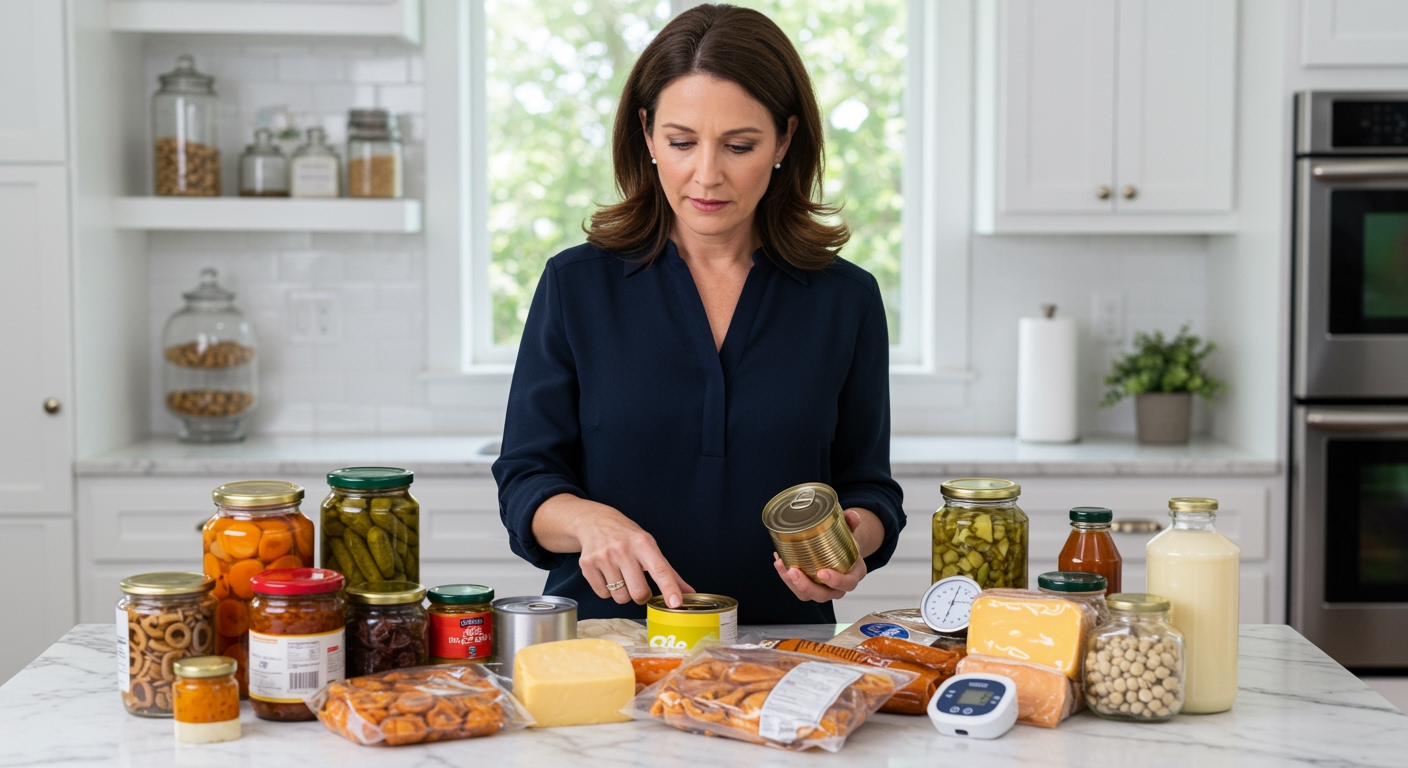✪ Key Takeaway: Hypertensive patients should avoid high-sodium preserved foods but can safely enjoy low-sodium options like frozen vegetables and certain canned goods.
Introduction
Your doctor just told you that your blood pressure is too high and you need to watch your diet.
You might be wondering if this means saying goodbye to all the convenient preserved foods that make your busy life manageable.
Hi, I’m Abdur, your nutrition coach and today I’m going to explain exactly which preserved foods you should avoid and which ones are perfectly safe for managing high blood pressure.
What Makes Preserved Foods Dangerous for Blood Pressure?
The main culprit in preserved foods is excessive sodium, which directly impacts your cardiovascular system.
When you consume high amounts of sodium, your body retains more water to dilute the salt concentration in your bloodstream.
This extra fluid increases the volume of blood your heart must pump, creating higher pressure against your artery walls.
Research shows that reducing sodium intake by just 1000mg daily can lower systolic blood pressure by 2-3 mmHg in hypertensive patients.
Many preserved foods contain hidden sodium sources like monosodium glutamate, sodium benzoate, and sodium nitrite that add up quickly throughout the day.
The processing methods used in food preservation often require salt as a natural preservative, making it nearly impossible to eliminate sodium completely from these products.
✪ Fact: The average American consumes 3400mg of sodium daily, which is nearly 50% higher than the recommended 2300mg limit.
Which Preserved Foods Should You Completely Avoid?
Processed meats top the list of foods that hypertensive patients should eliminate from their diet.
Bacon, ham, sausages, and deli meats contain astronomical amounts of sodium, often exceeding 1000mg per serving.
Canned soups represent another major sodium bomb that can derail your blood pressure management efforts.
A single cup of canned chicken noodle soup can contain up to 1200mg of sodium, which is more than half your daily allowance.
Pickled vegetables and fermented foods like sauerkraut are preserved using salt brines that make them unsuitable for hypertensive patients.
Frozen meals and TV dinners are particularly problematic because they combine multiple high-sodium ingredients in single servings that can exceed 2000mg of sodium.
✪ Pro Tip: Always check the nutrition label and avoid any product with more than 140mg of sodium per serving.
Are There Any Safe Preserved Foods for Hypertensive Patients?
Yes, several preserved foods can fit safely into a blood pressure-friendly diet when chosen carefully.
Frozen vegetables without added sauces or seasonings are excellent choices because they retain their nutritional value while containing minimal sodium.
Canned beans that are labeled “no salt added” or “low sodium” provide protein and fiber without the blood pressure risks.
Dried fruits without added sugar or sulfites offer natural sweetness and nutrients while being naturally low in sodium.
Certain canned fish like salmon or tuna packed in water rather than brine can be heart-healthy options when rinsed before consumption.
Unsalted nuts and seeds that are preserved through roasting or dehydration maintain their beneficial fats and minerals without adding problematic sodium.
✪ Note: Rinsing canned vegetables and beans can reduce their sodium content by up to 40%.
How Can You Make Smart Choices When Shopping?
Reading nutrition labels becomes your most powerful tool for managing blood pressure through food selection.
Look for products labeled “low sodium” (140mg or less per serving), “very low sodium” (35mg or less), or “sodium-free” (less than 5mg).
Compare similar products and choose the option with the lowest sodium content per serving size.
Focus on the ingredient list and avoid products where salt, sodium chloride, or sodium-containing compounds appear in the first five ingredients.
Fresh alternatives should always be your first choice, but when convenience is necessary, these label-reading skills will protect your health.
Consider preparing and freezing your own meals in batches to have convenient options that meet your dietary requirements without compromising your blood pressure goals.
✪ Pro Tip: Shop the perimeter of the grocery store first, where fresh foods are typically located, before venturing into processed food aisles.
The Bottom Line
You do not need to avoid all preserved foods if you have high blood pressure, but you must become a selective and informed consumer.
Smart food choices are not about perfection, they are about making better decisions most of the time.
I would love to hear about your experiences with managing blood pressure through diet, so please share your questions, challenges, or success stories in the comments below.
References
At NutritionCrown, we use quality and credible sources to ensure our content is accurate and trustworthy. Below are the sources referenced in creating this article:
- PMC: Dietary Sodium Intake and Hypertension
- El Camino Health: Lowering Sodium in Your Diet
- PMC: Food Processing and Blood Pressure
- News Medical: Food Processing Levels Impact Blood Pressure





